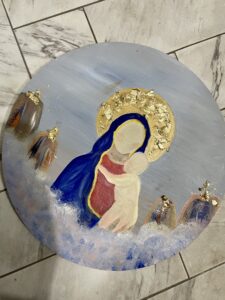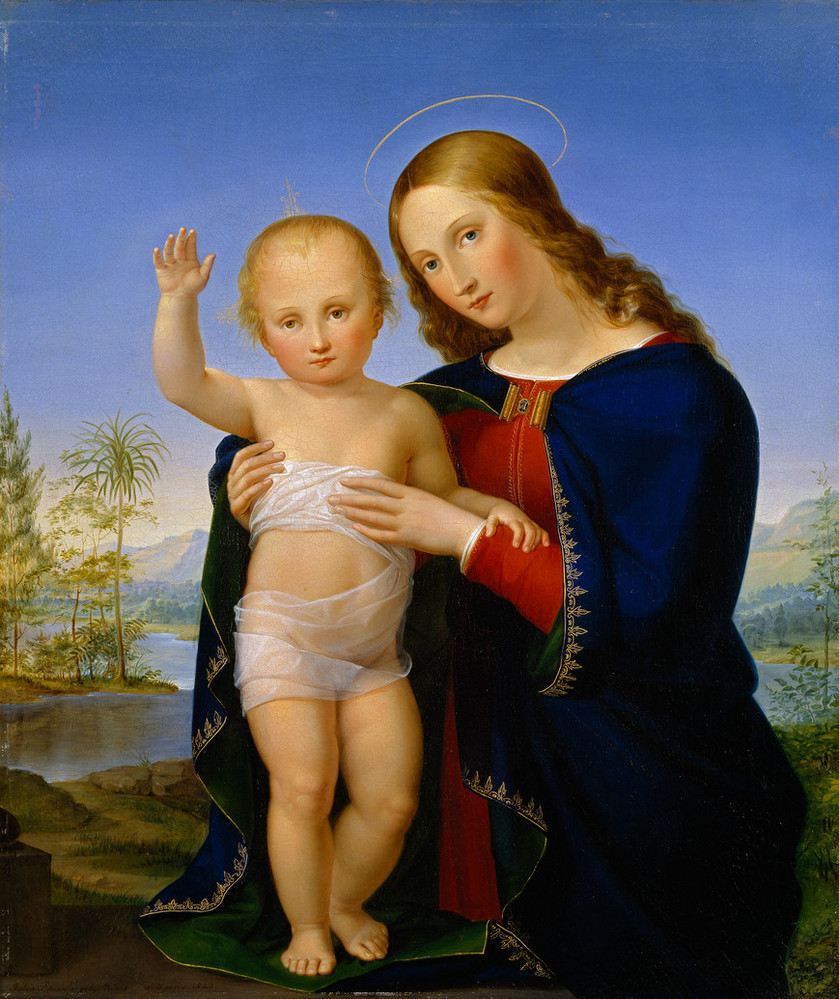The birth of a child was revered in Renaissance Italy, and it was frequently lavishly celebrated. Large families were prized for demographic, economic, and political reasons at this time. In many situations, the joy was heightened by the knowledge of the inherent difficulties that each successful birth had to overcome (Musacchio, 1998). Childbearing was linked to a considerable percentage of mortality among young married women, and an equivalent number of newborns died within days after birth (Musacchio, 1998). As a result of this predicament, several things were created and used to promote, celebrate, and commemorate childbirth such as painted wooden birth trays or desco da parto.(Musacchio, 1998). Birth trays first emerged in Italy approximately in 1370, and were especially popular in Florentine and Sienese culture in the 15th century (Musacchio, 1999). Rich families had beautifully painted confined scenes with suitable religious, mythological, or literary subjects commissioned. Birth trays were also mass-produced in workshops, allowing common people to purchase them at the time of their child’s birth (Musacchio, 1999). Desco da parto’s are important items in the study of Renaissance art because they assist to confound existing notions of spectatorship in fifteenth-century Italy. Deschi da parto’s concentrated shape and tactile materiality naturally raises problems about purpose, composition, and space representation (Randolph, 2004). The intricate topics that appear on their surfaces bring up concerns of iconography and empathy, particularly in relation to the social relationships that occurred during birthing. Furthermore, these works serve as a bridge between the histories of aristocratic domestic art and material culture as it serves as a laboratory for the exploration of what it means to gender the period eye as the only genre of painting clearly devoted to a female audience (Randolph, 2004).
To symbolize a traditional Desco da parto, this would include the incorporation of popular religious symbols, like Madonna and Child, most commonly from literature. Madonna and Child were my choice of religious symbol, because to keep this piece more authentic would entail the incorporation of religious symbolism. Madonna represented a universal ideal of mother who appealed to women from all social levels in Venetian society (Hurll, 1897). The image might also be seen as a plea to parents to raise children who are courteous, and kind as young children would often look to Christ as a role model because the Christ Child set an example of virtuous behaviour and the value of parental respect among children (Hurll, 1987). The Madonna and Child paintings conveyed hope for redemption to all members of the family. This choosing of the Madonna and Child seemed fitting for this project as this wooden tray is gifted during childbirth and used by the mother after birth to enhance mental and physical well-being.
Analysis of Art Piece
The medium I ended up choosing was acrylic paint, on wood canvas, with gold foil accents. The reason for choosing paint over my previous decision of pencil crayon was more in relation to the research I found. This research inspired me further to create my own version of a Desco da parto, and comment on the gender relations during birthing practices that arose from Italian medieval culture that center around a women dominant practice, questioning the gendered spaces that existed in medieval Italy.
The Madonna and Child Enthroned with Saints of Ambrogio Lorenzetti was studied using a combination of Raman microspectroscopy and scanning electron microscopy (early 14th century; St. Augustine church, Siena, Italy) (Damiani et al., 2014). The pigments employed in this wall painting were those often used by mediaeval painters: chalk white, white lead, yellow ochre, red ochre, red lead, cinnabar, Siena earth, green earth, verdigris, azurite, and carbon black, according to the findings. The haloes have been further embellished with gilded tin foil (Damiani et al., 2014). While oil paints were the medium made in medieval times, I chose to do acrylic because I do not know how oil paints works and they are also pricey! So, in my rendition of Madonna and Child, this is the article where I started with to begin my painting project. I thought by getting a glimpse into the general colours used, then I could then formulate that into choosing the paints that I do have in relation to these traditional oil paints. I was very excited to find this article as it was everything, I was hoping it would answer to my questions of “what colours were readily available for medieval Italian artists”? The colours that I had available were: sienna brown, burnt sienna, chalk white, yellow ochre, cadmium red, carbon black, and ultramarine blue. Although not completely the same of course, the idea was to see the colours medieval Italian painters had at the time. My previous assumption was that they would not have much access to different hues and would rather be a mixing of the primary colours. This assumption was very wrong, so I was pleased to learn this along the way. The colours behind my piece represent bold and bright colours as this was a common theme and inspired from various artists such as Giovanni di Ser Giovanni (1406-1486). The Triumph of Fame, ca. 1448 brother to Masaccio, born Tommaso di Ser Giovanni di Simone (1401-1428) (Musacchio, 1998). Both of these brothers created elaborate birthing trays that encapsulates the gendering of one room while a child is being born.
Madonna is modestly cloaked in blue, which reveals her heavenly nature because blue is widely used in paintings to signify heaven (Barbera 2005). Therefore, I painted Madonna’s cloak in blue, while depicting an aura of heaven with the blue sky and clouds. This gave the painting a celestial feel to me, while symbolizing and giving strength to expecting mothers during and after childbirth. I added four women, more of a dark hue to make them seem prominent because they were, to the side representing the multiple hands that would in the room, particularly that of women during childbirth. Representing the multitude of women in the birthing chambers to assist with this progress and derive a sense of hope for them all. While reading Randolph’s 2004 article with the idea they introduced as the gendering of space, as space was a relevant subject in all aspects – and what we see with the Desco da parto’s are a subjective paintings, mainly from male painters, who depict rooms full of women when child birth occurs. These trays had significant meaning not only to the receivers of these gifts but also for us to interpret centuries later of gendering practices in medieval times.
Although I am not the best at painting, I thought this would be the best medium to use. So, I hope this portrayal you see the depiction of a holy figure, a women at that, surrounded by more women with a baby at its center to send positive fortunes to birthing mothers, which was generally a women centered space in medieval Italy.

Writing Details
- Anonymous
- 17 June 2022
- 1169
- Julie Mihes, Madonna and Child, 1823; Oil on canvas, 39 1/4 x 33 1/4 in.; National Museum of Women in the Arts, Museum purchase: Members' Acquisition Fund
- Tweet

Leave a Reply